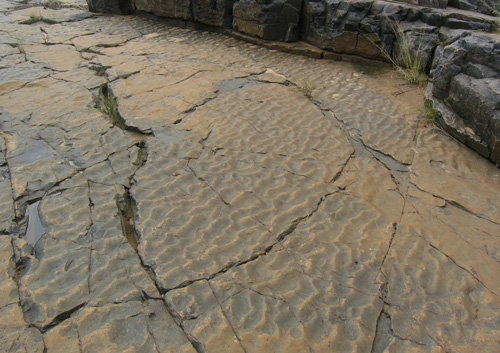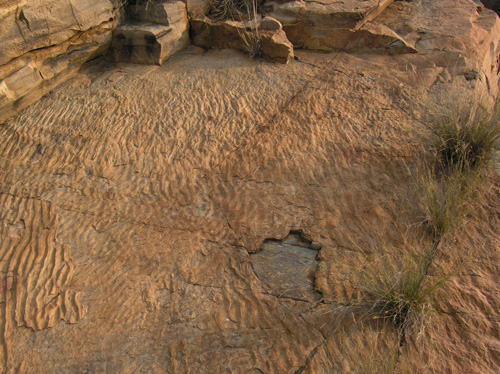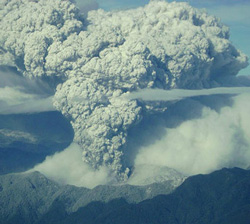Spot (and explain, if you can) the differences.



It’s not much of a hint to say that the last one is quite difficult – but the last one is quite difficult.
Update: Click through for the answer.
Spot (and explain, if you can) the differences.



It’s not much of a hint to say that the last one is quite difficult – but the last one is quite difficult.
Update: Click through for the answer.
 In the wake of this weeks rather spectacular eruptions of the Chilean volcano Chaitén (which is being well-covered by the Volcanism Blog; more cool photos are available here, and at NASA’s Earth Observatory), a commentator has asked for some clarification on “how geologists classify volcanoes as active, dormant or extinct.”
In the wake of this weeks rather spectacular eruptions of the Chilean volcano Chaitén (which is being well-covered by the Volcanism Blog; more cool photos are available here, and at NASA’s Earth Observatory), a commentator has asked for some clarification on “how geologists classify volcanoes as active, dormant or extinct.”
The simple answer to this question goes thusly:

In this case, several eruptive cycles have been and gone since the last eruption, and we might be justified in saying that this volcano is extinct. In contrast, we might find that the eruptions are much more infrequent, say every 15,000 years or so:

In this case, we are still within the timeframe required for one eruptive cycle, and the magma chamber could still be refilling as a prelude to the next explosion. More detailed examination – trying to seismically image the magma chamber, or looking for gas emissions or hot springs, might give us some clues about whether your friendly neighbourhood mountain is dead, or merely dozing.
The problem, of course, is that for many of the world’s volcanoes this long-term information is just not available. If we look at Chaitén’s eruptive history, there was only one known eruption prior to this week’s pyrotechnics, which has been dated to around 10,000 years ago. The eruption has been described as a ‘surprise’, but in fact we don’t know enough to know if we should be surprised or not.
In addition to searching out evidence for Archean microbial mats, my revisitation of the Pongola sandstones gave me the chance to look a bit more closely at their lithology. When I last posted pictures from this sequence, there was a bit of discussion about why the beds appeared to be quite dark – sandstones are generally lighter in colour (being composed mainly of quartz). Is this due to some weird mineralogy? Or just an effect of modern day weathering?
Here’s a close-up of one of the dark beds:

It does appear that the dark colour does indeed seem to be a result of minerals actually in the rock, rather than formed by weathering on the surface. However, I’m still not sure what these minerals are; presumably there’s just enough squeezed in between this quartzite’s cemented quartz grains to change it’s optical properties. You’d probably have to make a thin section to know for sure what they are – any guesses?
Last week I ventured into the field in the company of Nora Noffke, of Old Dominion University in Norfolk, Virginia. who is an expert on the fossil record of ancient bacterial mats. It turns out that this record does not simply consist of the well-known stromatolites; in shallow marine environments mat-forming microorganisms can bind and stabilise the sediment surface, leading to the formation of distinctive structures that are not formed by purely physical processes. This is in contrast to the difficulties in distinguishing between those stromatolites that have been formed in association with bacteria, and those that have been precipitated entirely inorganically.
It turns out that the Pongola Supergroup – the Archean rocks that I am currently trying to extract a magnetic signal from – is a good place to look for these ‘microbially induced sedimentary structures’. As we’ve already seen, ripple marks, dessication cracks and other sedimentary features are extremely well preserved in the sandstones which make up the upper part of the sequence, despite their venerable age of 2.9 billion or so. Furthermore, the tidally-influenced shallow marine environment is which these rocks seem to have been deposited is prime mat-forming territory. Nora was kind enough to point out some of the outcrops that featured in her recent paper in Geobiology, which describes a section through the Pongola sandstones and makes the case that many of the preserved sedimentary features are consistent with the presence of a thriving bacterial mat ecosystem. I am not confident that I would have really noticed any of these myself: this is one of those times when knowing what you’re looking for – through a good grounding in the sort of features formed by modern mat growth in similar environments – is essential if you’re going to distinguish the real deal from modern weathering patterns on the bedding planes. Two examples are found beneath the fold.
Brian’s had the cool idea of summarising some of his pending scientific papers using tag clouds, and I’m joining Lab Lemming, ReBecca and Maria in jumping on the bandwagon. The following two clouds, which may or may not provide some insight into what I’m all about scientifically, are generated from the text of a couple of my papers, sans references and figure captions, using tagcrowd on its default settings (hence the appearance of ‘et’, ‘al’, and ‘figure/fig’). I thought it also might be fun to compare the clouds to the list of keywords that you actually have to provide yourself. The first one is for my recent JGR publication about New Zealand tectonics (yes, the one I promised to write some posts about; something I will get around to once I’ve completed a couple of neccesary background posts).
Number two was submitted to Earth and Planetary Science Letters just before I went away, and is based on work I did between finishing my PhD and leaving Southampton, and focuses on diagenetic changes to the magnetic mineral assemblage within marine sediments, and their effects on the paleomagnetic signal they carry.
I’m apparently not too gratuitously self-citing, but it does seem that, since my PhD supervisor’s name appears on both lists, I’m a bit of a suck-up. That’ll surprise him – although since both papers concern the effects of evil greigite, and he’s been heavily involved in its ascent up the heirarchy of Important Magnetic Minerals in recent years, I could hardly help citing him lots. Given that certain recent reviews have suggested that I seem to be rather good at upsetting people I’m rather surprised that more researcher names don’t appear (the only other one on the JGR paper is retired).
There is also a reasonable degree of overlap between my chosen keywords and the ones that appear in the tag cloud. It’s no surprise that they’re not completely identical (as the most important concepts or themes in a paper are not neccesarily related to how frequently you mention them), but it does seem that you can potentially get a reasonable sense of what a paper might actually be discussing from this sort of thing. The question is whether it actually has any utility in finding papers and/or assessing whether you want to read them.
Nice plan for content warnings on Mastodon and the Fediverse. Now you need a Mastodon/Fediverse button on this blog.